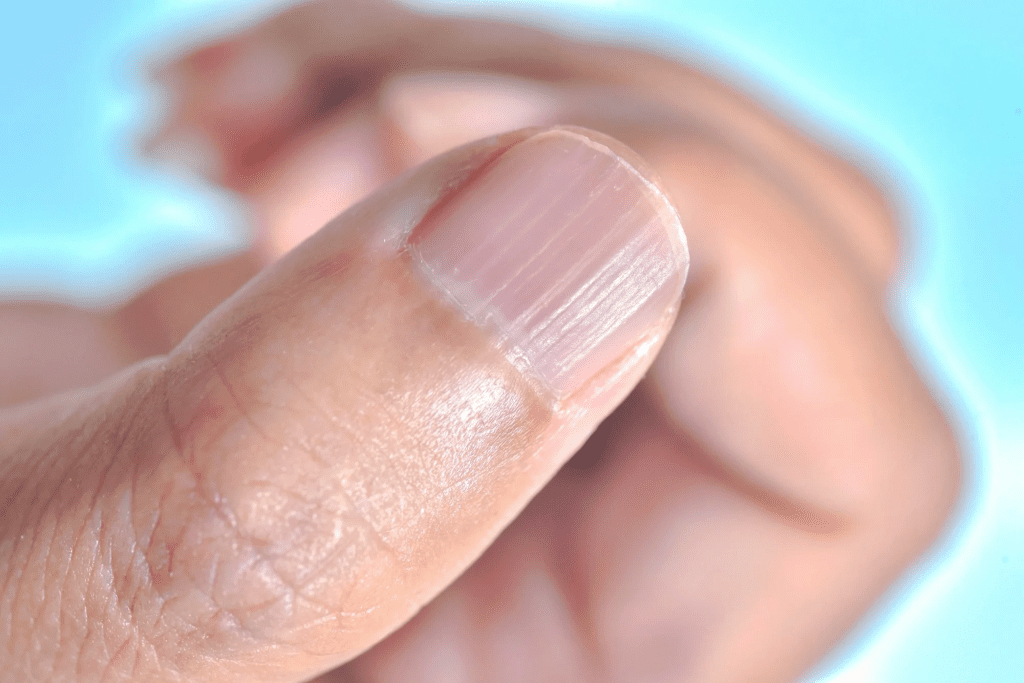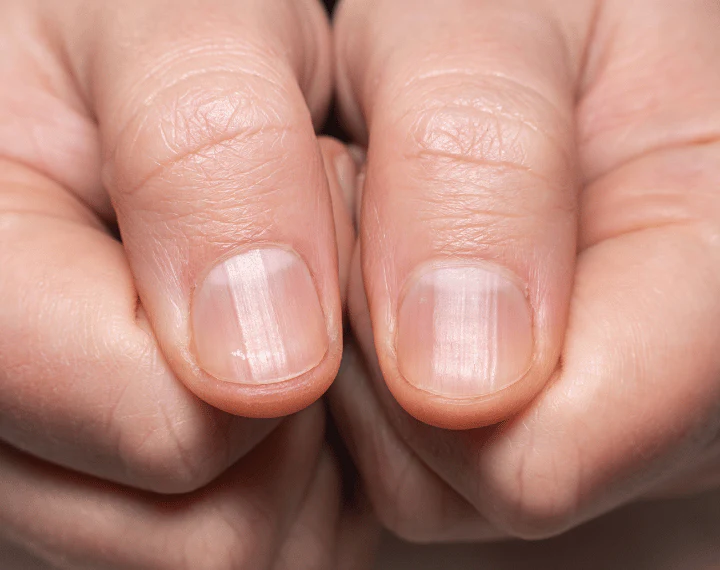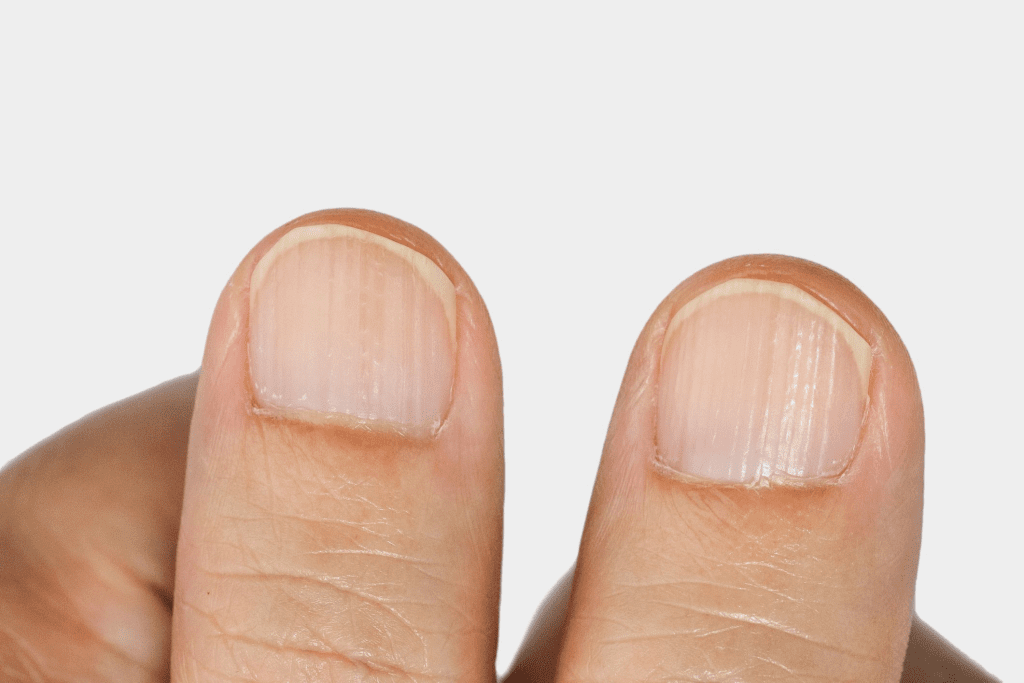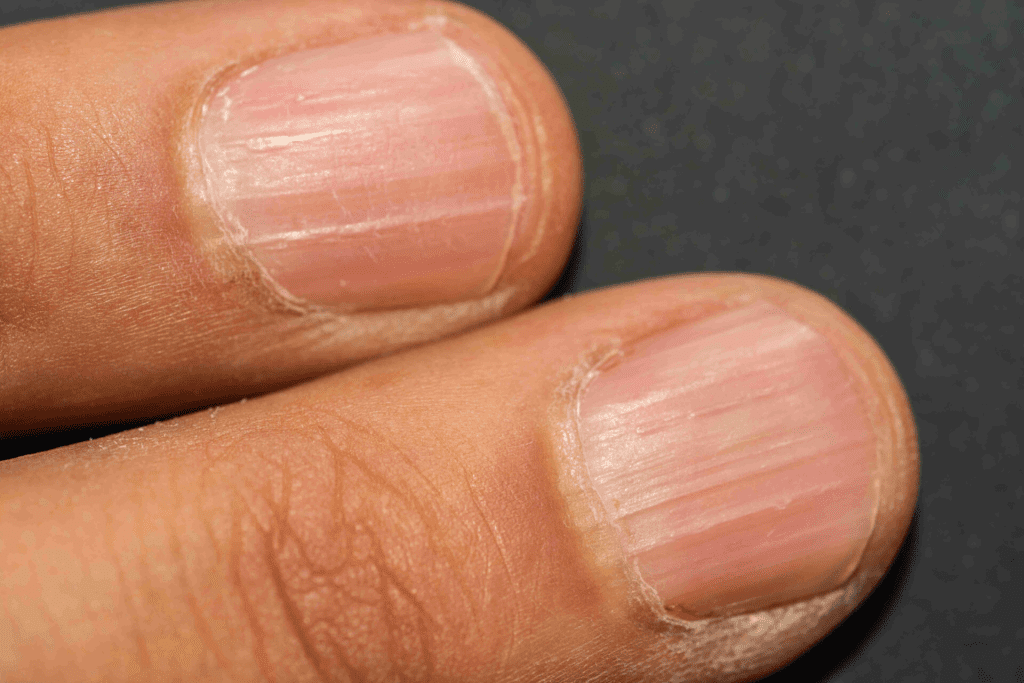Have you ever noticed thin, raised lines running from the base to the tip of your nails? These are known as vertical ridges and are more common than you might think. While they can often be seen as a harmless cosmetic change, their appearance can provide clues about your overall health. Understanding the possible causes and implications of these ridges can help you maintain healthier nails and potentially identify underlying health concerns.
Why Do Vertical Nail Ridges Occur?

The occurrence of vertical ridges on your nails is a widespread phenomenon, often associated with the natural aging process. As we age, the surface of our nails may gradually become uneven, resulting in the appearance of these ridges. However, aging isn’t the only potential cause; several other factors can also contribute to their development. Let’s take a closer look at the primary causes.
1. The Natural Aging Process: A Common Cause of Vertical Ridges
Vertical ridges often develop naturally as part of the aging process. Just like our skin, hair, and other body parts, our nails undergo changes as we grow older. As we age, the production of keratin, the protein that forms nails, slows down. This decrease in keratin production can cause nails to lose their smooth texture, making vertical ridges more prominent.
These ridges, typically referred to as longitudinal striations, are generally considered normal and harmless in older adults. While they don’t necessarily indicate a health problem, it’s always good to monitor any significant changes in your nails, as they could sometimes hint at other health conditions.
2. Nutritional Deficiencies and Their Impact on Nail Health
Our nails reflect what we eat, and nutritional deficiencies can play a significant role in nail health, including the development of vertical ridges. The lack of certain nutrients can make nails appear more brittle and ridged. Here are some specific nutrients that, when deficient, may cause these changes:
- Protein: Protein is a building block of healthy nails. Insufficient protein intake can result in weaker nails with more visible ridges.
- Iron: Iron deficiency is linked to changes in nail texture, such as koilonychia, also known as spoon-shaped nails. While this condition differs from simple vertical ridges, both can be related to insufficient iron levels.
- Vitamin B12: This vitamin is essential for healthy red blood cell production, which supports nail health. A lack of Vitamin B12 can cause both vertical ridges and a bluish tint to the nails.
If you notice persistent or deepening vertical ridges on your nails along with symptoms like fatigue or pale skin, consider consulting a healthcare professional to determine whether a nutritional deficiency might be the cause.
3. Dehydration: The Link Between Water Intake and Nail Health
Dehydration affects almost every part of the body, and your nails are no exception. Inadequate water intake can result in brittle, dry nails, which may lead to vertical ridges. When the body lacks sufficient hydration, it struggles to maintain the health and moisture levels of the nails, making ridges more visible.

To help reduce vertical ridges caused by dehydration, try to drink at least eight glasses of water a day. Remember, staying well-hydrated benefits not just your nails, but your skin, hair, and overall well-being too.
4. Trauma to the Nail Bed: Another Possible Cause
Sometimes, vertical ridges can develop due to trauma or injury to the nail bed. Even minor injuries, like hitting your finger or picking at your nails, can cause temporary changes in the nail’s appearance, including ridges. These ridges usually resolve themselves as the nail grows out, but repetitive trauma, like frequent manicuring, can cause more persistent changes.
If you suspect that the ridges on your nails are related to an injury, allow the nails to grow out naturally, avoid further trauma, and consider using a nail strengthener to help protect and rebuild nail health.
5. Medical Conditions That Can Cause Vertical Ridges

While vertical ridges are generally harmless, there are instances when they might be a symptom of a more serious underlying medical condition. For example:
- Rheumatoid Arthritis (RA): People with rheumatoid arthritis may notice changes in their nails, including the development of vertical ridges. This autoimmune disease can affect various parts of the body, including nails.
- Peripheral Vascular Disease: This condition, which affects blood circulation, can lead to changes in nail appearance, including increased ridges.
- Thyroid Disorders: Conditions like hypothyroidism can alter nail growth and structure, potentially leading to ridges.
If your vertical ridges are accompanied by other unusual symptoms—such as changes in nail color, nail shape, or additional discomfort—it’s crucial to consult a healthcare professional to rule out any serious conditions.
6. Maintaining Healthy Nails: Tips for Stronger, Smoother Nails
Now that we’ve explored some of the common causes of vertical nail ridges, let’s discuss ways to maintain healthier nails. Here are some simple strategies to keep your nails strong and smooth:

- Eat a Balanced Diet: Ensure that your diet includes plenty of protein, iron, and essential vitamins like Vitamin B12. Incorporating foods such as eggs, lean meats, leafy greens, nuts, and seeds can promote better nail health.
- Stay Hydrated: As mentioned earlier, drinking enough water is crucial for maintaining nail health. Proper hydration supports moisture balance in the nails, reducing the likelihood of ridges.
- Protect Your Nails: Avoid activities that could lead to nail trauma, such as aggressive manicuring or using nails as tools.
- Moisturize Regularly: Use a moisturizing cream or cuticle oil on your nails daily to keep them hydrated and reduce the risk of brittleness.
- Use Nail Strengtheners: Applying a nail strengthener can help protect weak or brittle nails and reduce the appearance of ridges.
Conclusion: Vertical Nail Ridges Are Not Always a Cause for Alarm
While vertical ridges on your nails are usually a natural part of aging, they can also provide useful insights into your nutritional status or general health. By understanding the potential causes—ranging from nutritional deficiencies to dehydration and even certain medical conditions—you can take proactive measures to support healthier nails. If you notice any sudden or significant changes in your nail appearance, don’t hesitate to consult a healthcare professional to ensure your well-being.


